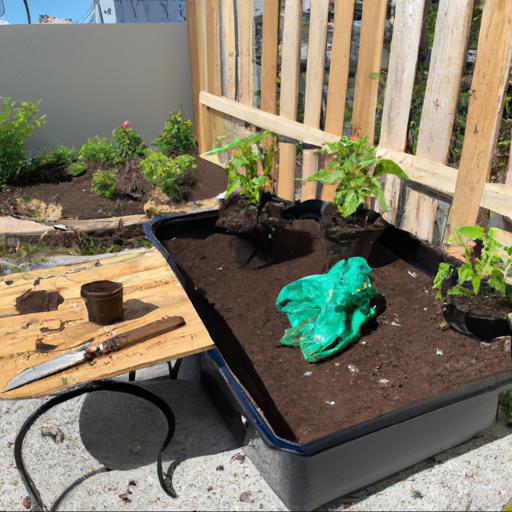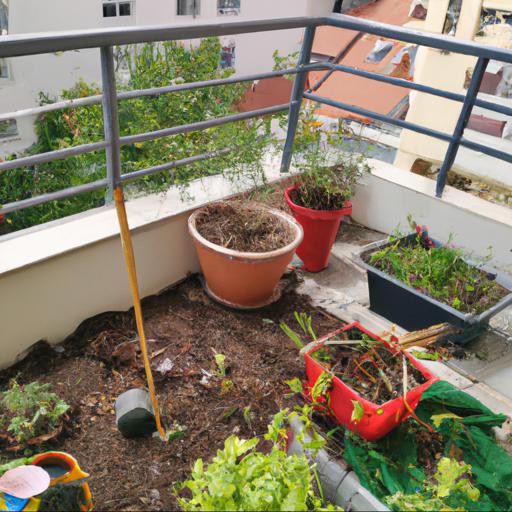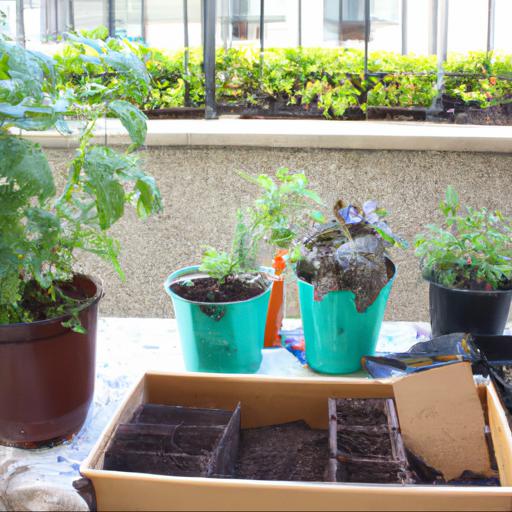Are you looking for some tips to help you get started with urban gardening? Whether you’re a beginner or an experienced green thumb, these tips for urban gardening can help you make the most of your space and create a beautiful, thriving garden.
From selecting the right plants for your area to utilizing vertical gardening techniques, these tips can help you get the most out of your urban garden.
Benefits of urban gardening

Urban gardening is becoming increasingly popular among urbanites looking to make their city dwelling feel like a home. Not only does gardening bring beauty and life to a space, it also brings with it a host of benefits related to mental and physical health.
Let’s delve into the tips and tricks that can help make the most out of an urban gardening experience. First and foremost, it’s important to think about the type of garden setup that best fits your space and lifestyle. Large or small, indoors or out, there’s something for every city dweller – even those with limited outdoor space or a vocal landlord.
Opting for potted plants on balconies, indoor herb gardens, and vertical walls are all great options that require minimal effort while still enhancing the visual appeal of a living space. Being able to source plants that can thrive in urban environments is also important.
Selecting native and pesticide-free vegetation is a great way to ensure a robust and sustainable garden. Creating a garden that can accommodate the climate at hand is also essential. For example, a gardener living in a subtropical climate should ideally select plants that are native to the region – this will require less maintenance and result in a more resilient garden.
Finally, urban gardeners should take into account the maintenance needed to keep their garden in tip-top shape. Regular pruning and watering is key to ensuring a lush and vibrant garden.
Speaking of water, it’s best to invest in a rainwater harvesting system to help save time and money. This can be done using a large container, gutter system and pump to efficiently collect and store rainwater. Urban gardening is a great way to bring a space to life while reaping the many health benefits of nurturing plants.
By reviewing the tips above, city dwellers can make the most of their unique gardens and create something beautiful and long-lasting.
Tips for starting an urban garden

Living in the city can be an amazing and rewarding experience, but with limited access to nature, it can be difficult to enjoy the feeling of growing your own food. Fortunately, gardeners of all skill levels now have access to the space and technology needed to bring the outside indoors with urban gardening. With a little creativity and resourcefulness, you can turn your cramped living space into an oasis of productive growth.
Here are some essential tips for starting an urban garden. First and foremost, urban gardeners should start small.
Keeping a manageable size will allow you to focus on optimizing soil, water, and sunlight, which are essential components of urban gardening. A great way to start is by collecting a wide variety of containers – mason jars, tin cans, and even plastic bottles can be used to plant a variety of herbs, leafy greens, tomatoes, and other vegetables. Make sure to add small drainage holes to ensure proper water flow.
Urban gardeners should also pay special attention to the type of soil they use in their containers. A soil-less potting mix is ideal for keeping plants healthy and resilient.
You may also want to consider adding fertilizer or compost to ensure that your plants get the necessary nutrients for growth. Additionally, make sure to pay attention to the light needs of your plants. Be aware of shadows from nearby buildings and trees, which can affect the light levels in your space.
Finally, make sure to keep your urban garden watered. The biggest challenge with container gardening is making sure all of the plants get enough water without becoming oversaturated.
The amount and frequency of watering will vary depending on the type of plants you have, but it is important to stay on top of it so roots don’t end up drowning. Whether beginner or expert, urban gardeners now have the resources and space to build thriving gardens right in their own backyard. With the right preparation, you can enjoy the beauty and bounty of an urban garden, no matter how small the space.
Common challenges of urban gardening

Urban gardening can be challenging and intimidating, especially for those living in large, urban environments. From a lack of space and limited sunlight to dealing with local ordinances, there are a variety of challenges that must be tackled.
However, with the right tips and strategies, urban gardening can be an inspiring and rewarding endeavor that helps to foster a sustainable community. As a gardening expert in the UK, I’d like to offer some tips to help make urban gardening successful. Firstly, it’s important to choose a space that won’t be exposed to exhaust fumes and other sources of pollution.
Growers should also be mindful of local ordinances, as certain plants may not be permitted in certain areas. Secondly, try to make the most of available space with vertical gardening and raised beds. Incorporating containers, trellises and other structures can help maximize a small urban garden.
Finally, strategize for successful growing so that your plants will have an opportunity to thrive. Planting hardy varieties that can take the heat and humidity of an urban environment along with employing strategic mulching and other maintenance techniques can help create the best possible growing conditions.
Additionally, composting, utilizing earthboxes and other soil-enriching techniques can also help to produce successful harvests. Urban gardening can be a fulfilling endeavor and a great way to engage with the local community, as well as foster a more sustainable living environment. With the right planning and strategies, growing in tight, urban spaces can be a rewarding and successful experience.
Bottom Line
Urban gardening is a great way to bring nature into your city living. To get the most out of your urban garden, make sure to choose the right plants for your space, use quality soil, and provide adequate sunlight and water. Invest in quality tools, and use natural pest control methods to keep your garden healthy.
With a little bit of planning and care, you can create a beautiful and productive urban garden.
FAQ
What are the benefits of urban gardening?
The benefits of urban gardening include providing fresh, healthy produce, reducing food costs, promoting physical activity, improving air quality, reducing stress, and creating a sense of community.
What are the best plants for urban gardening?
Some of the best plants for urban gardening are herbs, vegetables, and flowers that can be grown in containers, such as tomatoes, peppers, lettuce, basil, chives, marigolds, and petunias.
What are the challenges of urban gardening?
The challenges of urban gardening include limited space, soil contamination, access to water, and lack of sunlight. Additionally, urban gardens are often subject to vandalism and theft, and the cost of gardening supplies can be prohibitive.
What are the best practices for urban gardening?
The best practices for urban gardening include choosing a suitable location, selecting the right plants for the space, providing adequate sunlight and water, using organic soil and compost, and practicing proper pest control. Additionally, it is important to plan ahead, create a budget, and practice sustainable gardening techniques.
What are the most common mistakes made in urban gardening?
The most common mistakes made in urban gardening include not providing enough sunlight, not preparing the soil properly, over-watering, not providing proper drainage, and not controlling pests and weeds.
What are the best tools for urban gardening?
The best tools for urban gardening include a trowel, pruning shears, hand cultivator, garden hose, watering can, and a soil knife.

